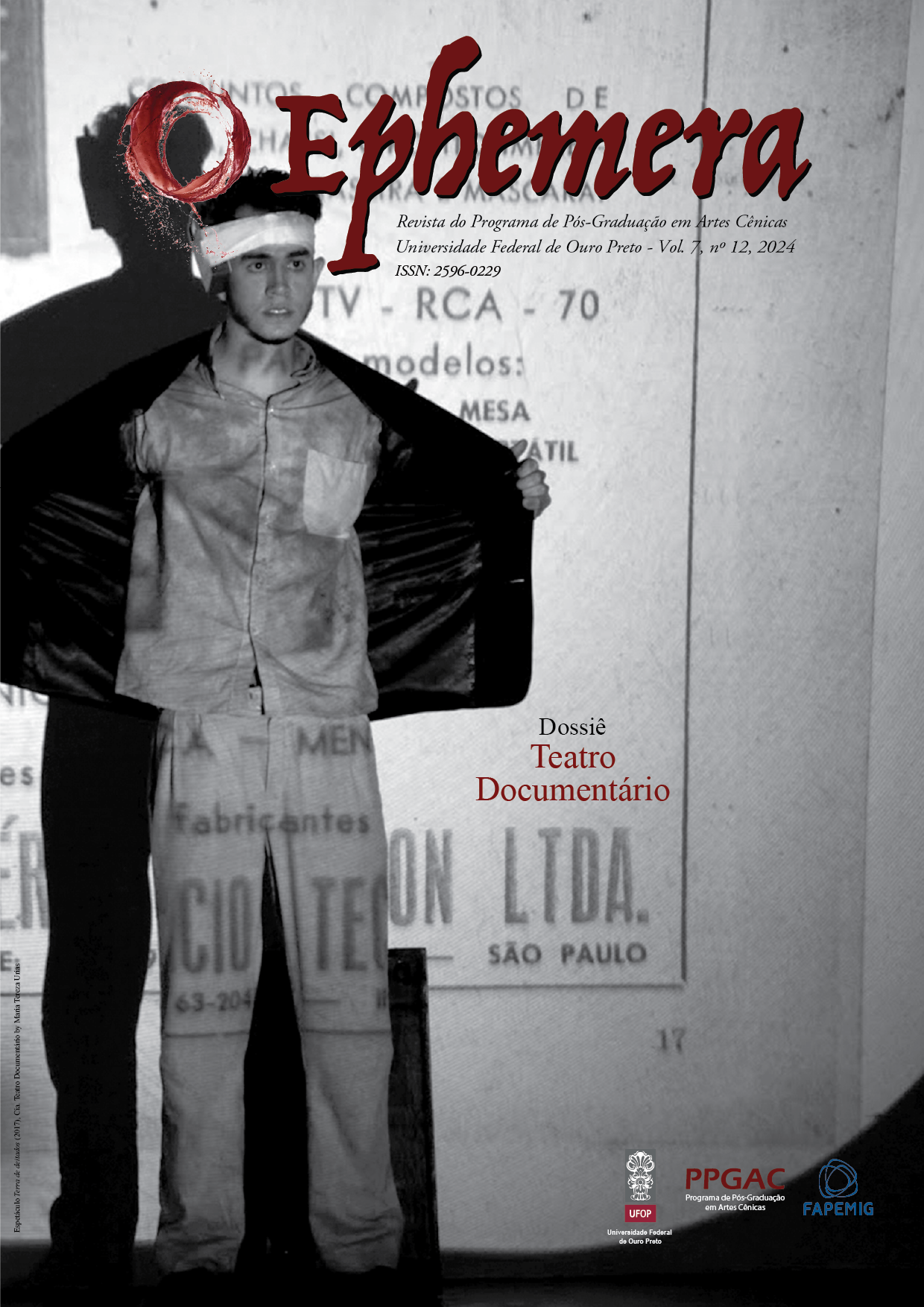ISSN: 2596-0229
Vol. 7 No. 12 (2024): Documentary Theater

In the last two decades it has been possible to observe, both regionally in Latin America and in many parts of the world, an exponential growth in shows and scenic experiments that can be included in the broad spectrum of documentary theater. It was a kind of resurgence, or new phase, since this type of theater seems to have lost visibility, or at least, centrality in the theatrical field for a certain time. In principle, there is a critical consensus that the most recent practices differ significantly from previous experiences, indicating a history characterized by discontinuity, in which, roughly speaking, two different models can be recognized: a documentary theater that can be called canonical – whose first prominent figure is certainly Erwin Piscator, who has in Peter Weiss one of his greatest directors/formulators and who also encompasses some of Augusto Boal's most daring experiments; and the recent practices that have been addressed under the term new documentary theater – a field in which the presence of non-actors, the new possibilities of audiovisual and the placement of representation in a kind of state of liminality brings it closer to the so-called theatres of the real, in which the emergence of reality on the scene is the keynote. Both models are still alive in practices as distinct as the biodrama, the court theater, the verbatim theater or the epic-dialectic theater of a documentary nature.


